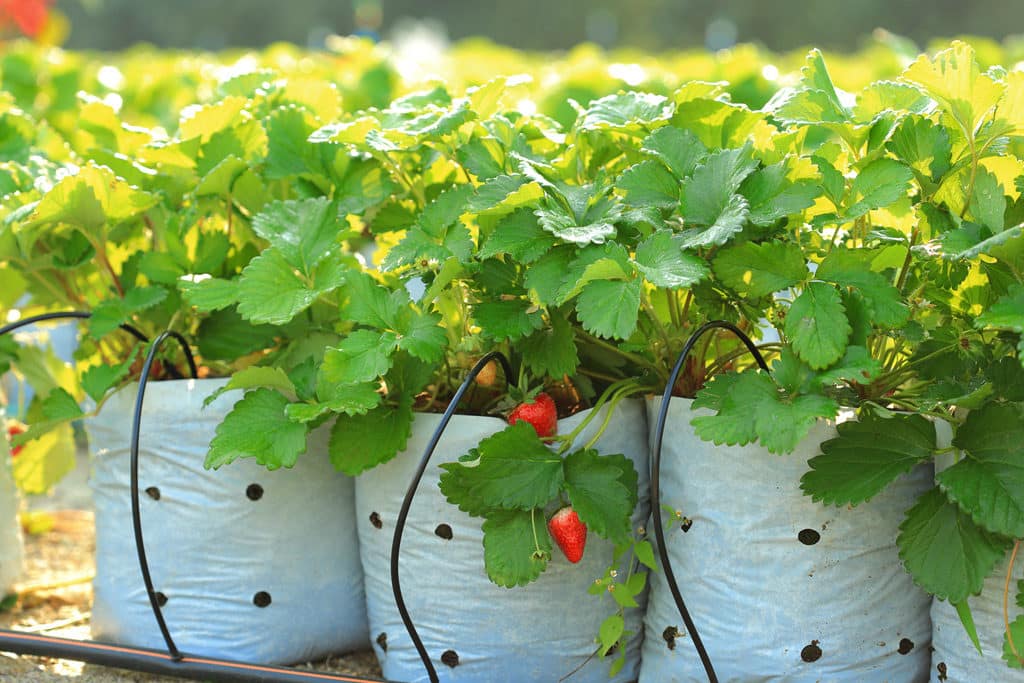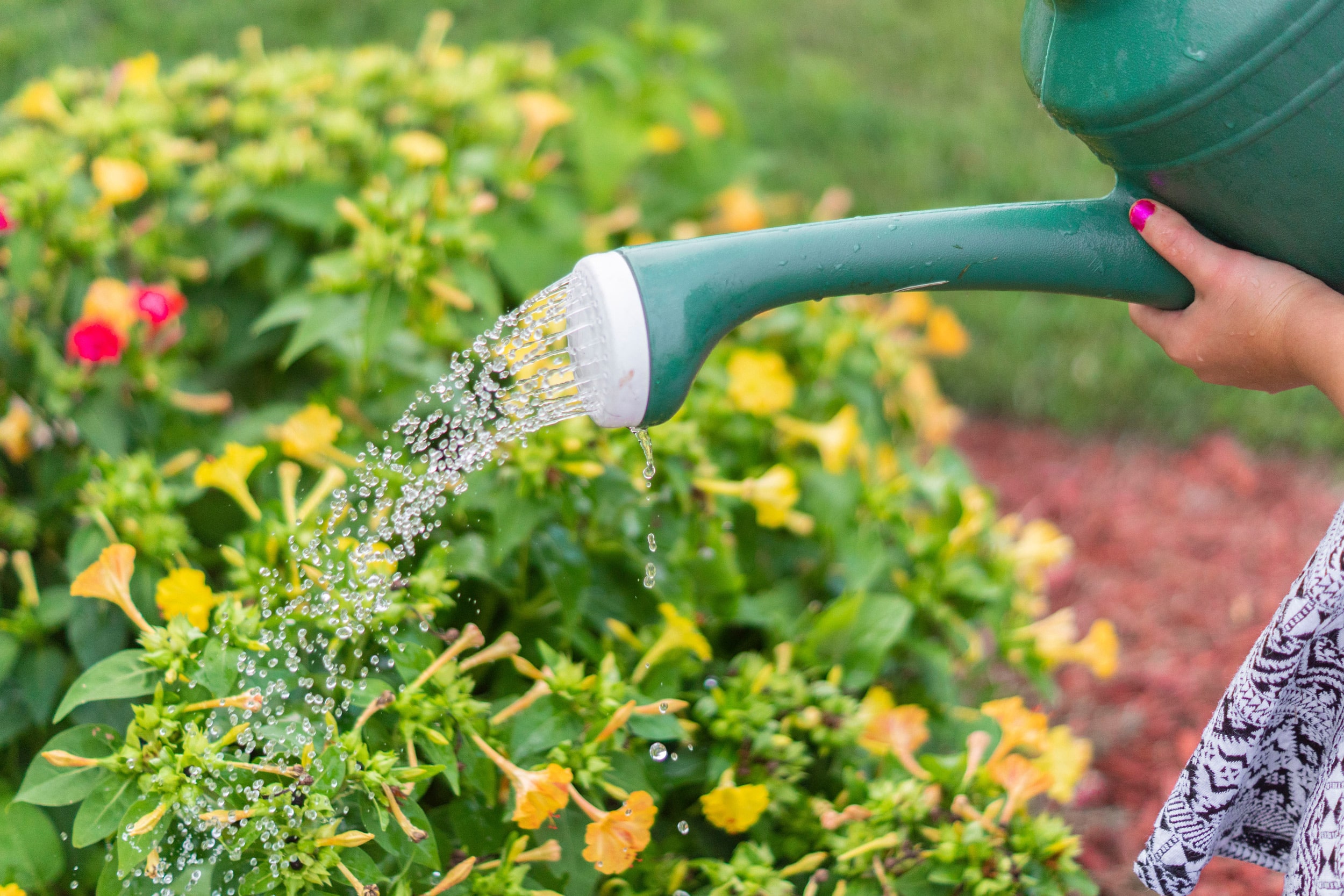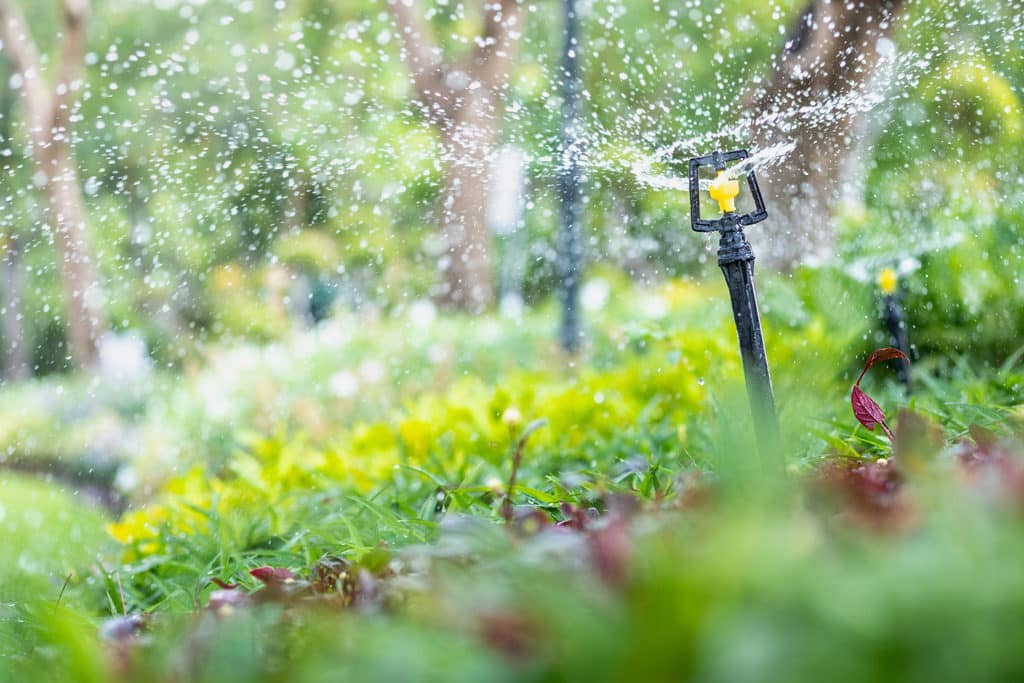07 Aug Watering your garden in summer
Plants need water to thrive. In this article we’re looking at irrigation systems to make watering your garden in summer a less time consuming and more eco-friendly.
Should you be watering your garden in summer?
A lush green garden is a great place to be on a hot summer’s day. However, there is a balance to be struck between the pleasure of being outdoors with time it takes to water your garden, the cost of the water itself and, of course the environmental implications of wasting water.
A well-established garden should need minimal watering in summer. However, some parts will always need extra care and attention.
- Pots, planters and hanging baskets need regular watering
- Newly turfed lawns should never be allowed to dry out
- Plants in greenhouses or polytunnels will easily wilt and die without water
- Growing your own food? Some vegetables need regular irrigation to boost their yields
- Freshly planted trees, shrubs and herbaceous perennials may need extra water to help them establish
Installing an irrigation system puts you in control of watering your garden in summer. You can decide which plants are watered and when they are watered. By using timers and/or a phone app, you’ll be able to water your garden whilst you are not at home. No more relying on friends and neighbours to keep your tomatoes alive.
Garden design tips to minimise watering work
Thinking for a moment about the environmental cost to watering your plants. In a dry year, there is always that worry that your plants will perish for a lack of water. If your garden has been designed, built and maintained really well, that risk is minimised.
When choosing plants, be sure to select species and varieties that suit your soil and where you plan to position them. If plants are enjoying every aspect of their lives, they are more likely to cope with a short spell of drought. This is especially important for high value specimen plants. Vegetation that is under stress is more prone to problems from drought as well as from pests and diseases.
Mulch your garden really well. Spring is the best time of year for mulching but if you didn’t get around to it, it’s never too late. Give your plants a really good drenching and then cover the soil with compost, bark mulch, aggregate or even a thick layer of newspaper. Agreed, the newspaper isn’t particularly attractive but it works a treat – especially in the veg patch.
You may also want to think about a rain garden. They’re fascinating. In simple terms, a rain garden is a system that collects runoff from hard surfaces (roofs, patios, paths etc) and stores that water in the soil.
Read more about rain gardens here
Which type of irrigation system is best?
When you start researching garden irrigation your head will spin at the choices out there. The key to irrigation is to match it to your situation. How frequently do your plants need watering? Where is the water source? Are you happy for the pipes to be visible or would you like something more discreet?
Watering newly laid turf
Newly laid turf should never be allowed to dry out. You MUST water at least once a day for the first 2-3 weeks after turfing. Longer than this in very hot weather. Only when the roots are really well established should you gradually reduce the frequency of watering.
Established lawns are more tolerant of drought and can survive several weeks without water. They will however stay greener if they have a good soaking from time to time.
For short term or temporary irrigation a hosepipe with a sprinkler and a timer is ideal. My good friend Robbie Lynn from Premier Lawns in Belfast has created an excellent video about lawn watering. There are lots of tips that apply to other parts of the garden too.
Watering shrubs and perennials
Just like lawns, once shrubs and perennials are well established, they should be reasonably drought tolerant. If you know that your garden is prone to dryness, choose plants wisely. Woody herbs such as lavender and rosemary like growing in dry soil. As do sedums, foxtail lilies, bearded iris and some ornamental grasses. If you need help creating a planting plan, talk to my colleagues at Tapestry Design Studios.
Newly planted shrubs and perennials, along with annual bedding plants, will definitely benefit from irrigation in hot weather. For these I favour a pressurised drip irrigation system. Unlike leaky pipes which tend to run out of impetus by the time they get to the end of the line, pressurised systems ensure that every plant gets the same amount of water.
To avoid waste, it’s always better to direct the water to the plants’ roots. That way you don’t lose too much to evaporation. In some circumstances however, you might prefer to use a micro sprinkler. Certainly these are useful if you have a carpet of closely spaced plants or if you want to apply a foliar feed via your irrigation system. If I’m honest – I do like the visual effect of an array of micro sprinklers all at work. They look great and make the garden feel fresh too.
Watering trees in the garden
There are some very user friendly tree watering systems available. Landscaping colleagues who create and care for commercial schemes and public open spaces use tree watering systems a lot. On a domestic scale though, you can’t beat watering by hand.
Recently planted trees benefit from really deep watering. A good soak once a week in hot weather should be enough to sustain them. As a rough guide, a tree with a 6cm girth, needs around 30 litres of water per month in summer. Hopefully, Mother Nature will provide that in the form of rain and groundwater but if your young tree seems to be struggling, then it’s wise to protect your investment. Floppy leaves, wilting, premature leaf drop and discoloured foliage are signs that your tree needs help.
Watering plants in containers, pots and baskets

Commercial irrigation systems like this ensure that every plant has its own water supply. You can replicate this for your own container grown plants.
Connect the timer to a phone app for extra control and less water wastage.
As a rule of thumb, the smaller the container, the more frequently your plants will need watering. Water can potentially evaporate from every surface of your pot and this is especially the case for hanging baskets where every surface (including the plants’ leaves) is exposed to drying winds.
A micro irrigation system is invaluable if you have lots of plants in pots – this applies to your tomato and pepper plants too! Fruit and vegetables can be spoiled by irregular watering. So a simple to use system which plugs into each individual pot and works on a timer could well save your crops.
Where to buy irrigation supplies
Irrigation can be confusing and tricky to set up. The Holland Landscapes Team have had plenty of experience at specifying and installing irrigation systems and we can help you too. Click here to email us with your needs and we’ll organise a quotation for you.
For DIY irrigation, I can thoroughly recommend ordering components from Landscape Plus. These are good quality, they’re from a UK based supplier and the service is second to none.





Sorry, the comment form is closed at this time.